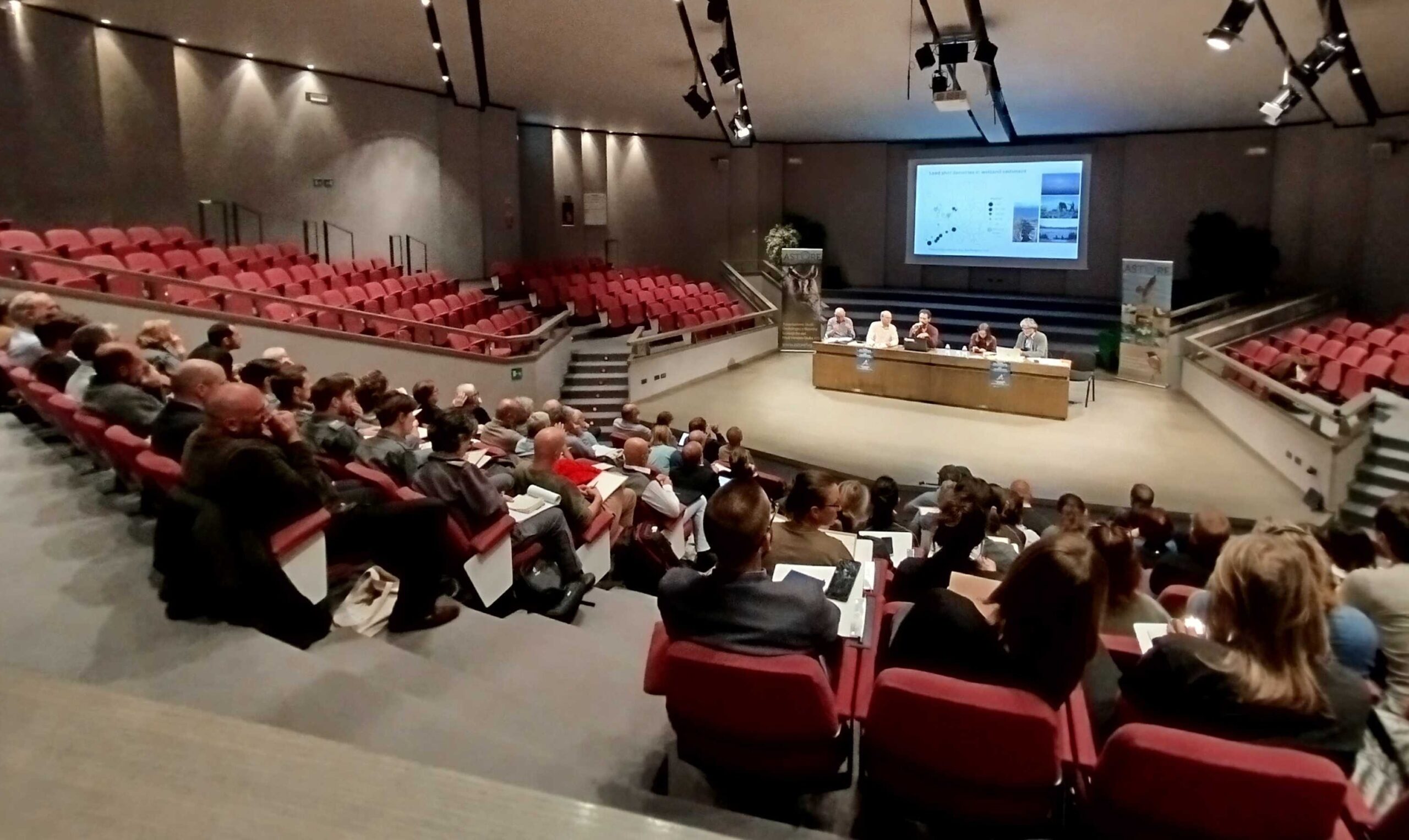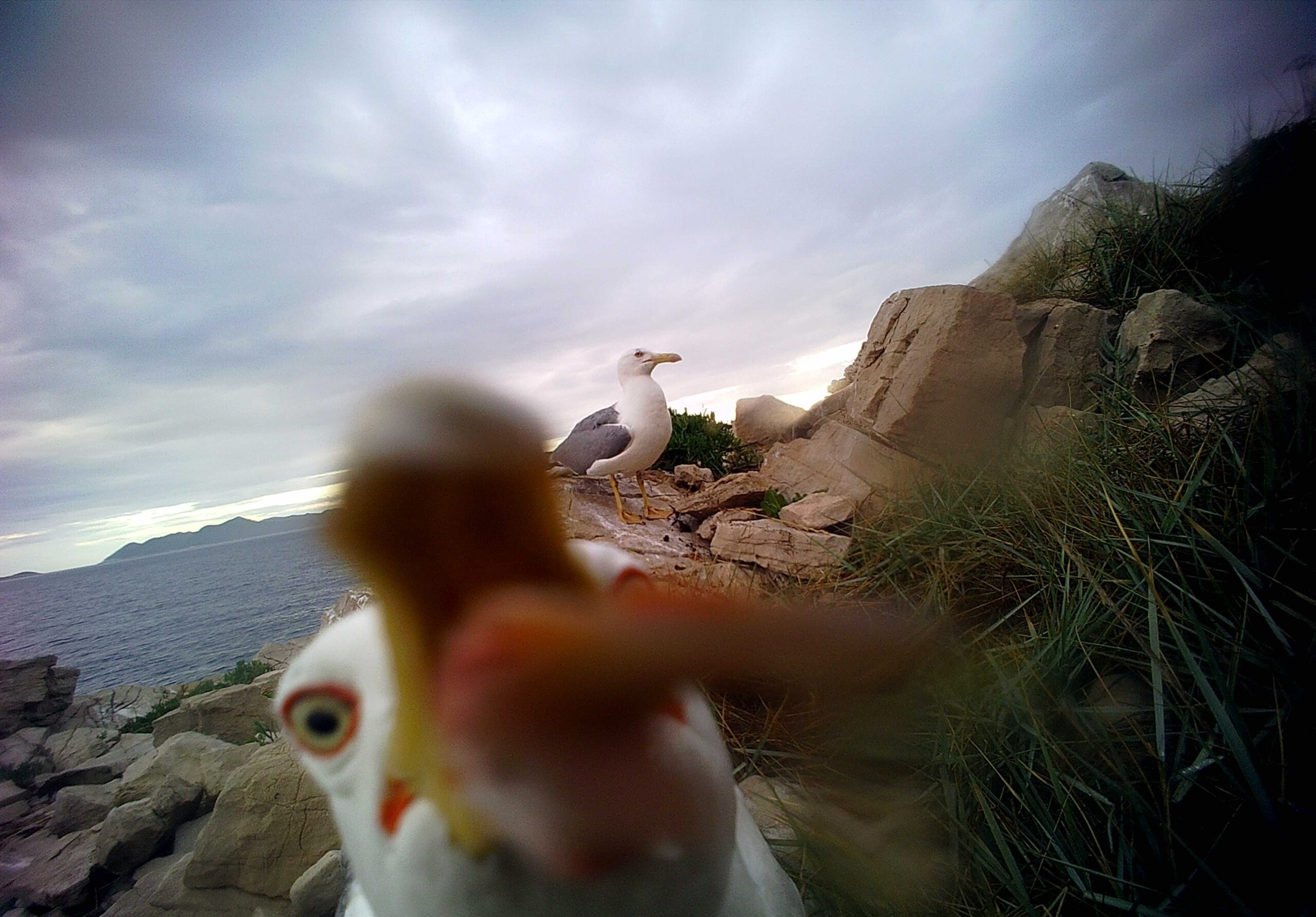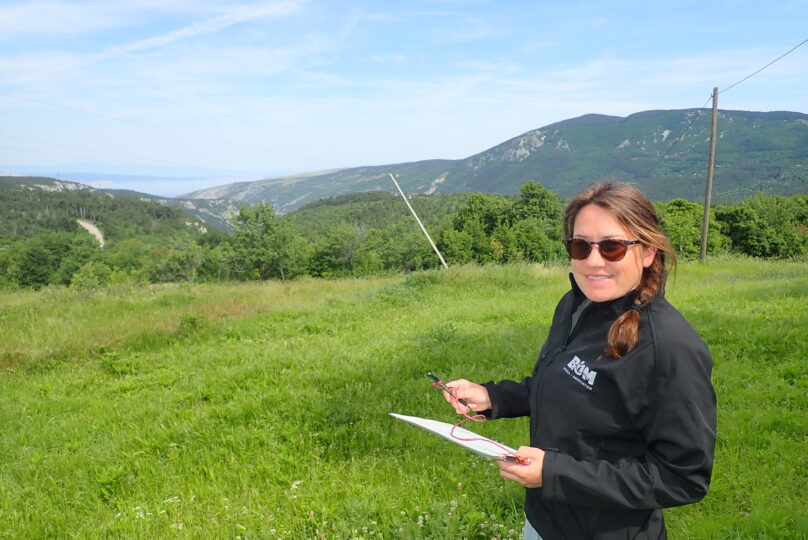
One of the major threats to the Croatian population of Griffon Vultures is electrocution on power distribution poles. Reducing mortality from electric shocks by implementing appropriate mitigation measures at key locations where electrocutions occur is one of the main goals of the LIFE SUPport project, which is 60% funded by the European Union’s LIFE programme. In partnership with the Croatian electricity distribution system operator (HEP ODS d.o.o.), the project foresees the implementation of bird protection measures against electrocution on 200 medium-voltage overhead line poles in the Elektroprimorje Rijeka area, using selected methods (installation of insulation equipment or replacement of bare conductors with insulated ones).
The LIFE SUPport project is led by the Association Biom, which organized and trained volunteers to carry out electrocution monitoring in the project area in order to identify all risk locations. This year’s monitoring, conducted across the islands of Cres and Rab and the Senj hinterland, included inspections of approximately 390 poles, with seven volunteers participating in the fieldwork. Among them is a unique volunteer duo – Jess and Jelly – who shared their experience with us.
Jessica Toms is a marine biologist, and Jelly Gelletich is a diving instructor and skipper from South Africa. After Jessica completed her studies, the pair worked and traveled together through Mozambique, Madagascar, Namibia, and many other exotic countries. Since Jelly has family roots in Croatia, they came to the Kvarner region, where in 2019 they had the opportunity to work a seasonal job at a diving center.
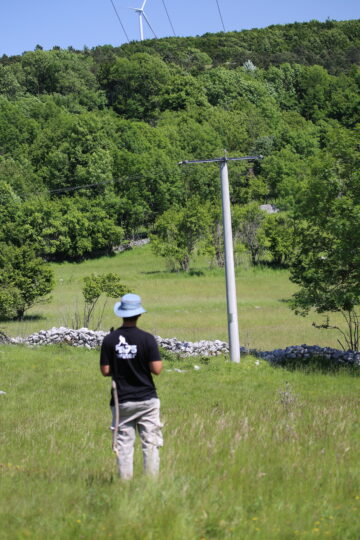
Last year, during their diving trips around Punta Glavina and other remote areas along the coast of Krk, they frequently observed Griffon Vultures and other birds of prey. That inspired them to reach out to Biom, marking the beginning of their collaboration. This year, they even became official members of BIOM.
“Then Ivana and Ante from Biom contacted us to ask whether we would be willing to help monitor bird electrocution incidents that Biom is investigating in the Senj hinterland. Before that, Ante gave us a short training. He taught us how to recognise different types of poles and power lines, and which types of pole heads pose the greatest risk of collision (for transmission lines) or electrocution (for distribution lines),” explained Jessica.
Birds can safely perch on a wire as long as there is no pathway for electricity to travel through their bodies. However, if they extend a wing and touch another wire or a grounded component, like uninsulated parts of a pole, they complete an electrical circuit and are fatally electrocuted. Large, slow-maturing, and long-lived raptors – such as vultures, eagles, buzzards, owls, and crows – are particularly at risk, as they often use tall poles as perches. Mitigation measures include insulation coverings, elevated perching spots, and spikes to discourage birds from landing on dangerous parts.
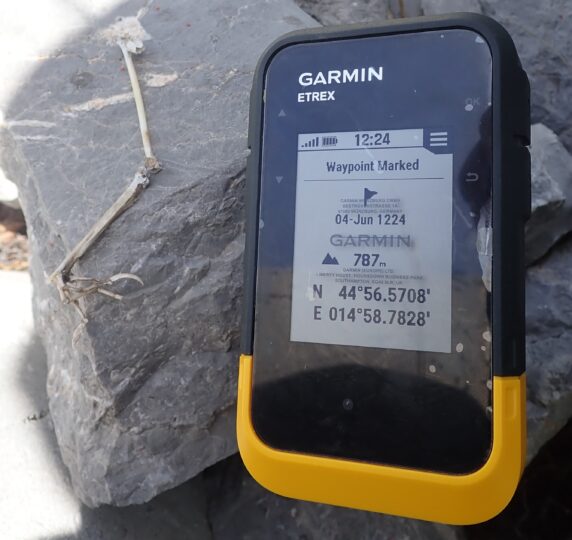
Volunteers were given emergency contact information in case they found an electrocuted bird, instructed to carry gloves, and trained on how to take photographs and collect remains in the provided waste bags if the incident was recent. If only bones or body parts remained, they were advised to collect at least the femur, beak, talon, or feather for identification and lab analysis.
They also received all the necessary equipment for fieldwork – gloves, hardy rubbish bags to collect any carcasses with, as well as a BIOM softshell jacket and a flask as part of their volunteering within the LIFE SUPport project.
“It turned out they were really important for us to wear these jackets we were given, as our Croatian is not so good yet and the jackets helped us to explain why we were there and people to recognize we are surveying for a valued cause. Once people understood this, they were very accommodating and helped us access some difficult to get to sites,” says Jessica, adding that the landscape in the Senj hinterland is stunning. They conducted their fieldwork as soon as they obtained the necessary permits, but by early summer the areas around the poles were already overgrown, which made monitoring more difficult. They offered to revisit the sites in autumn or early spring in case they had missed anything. During their patrols, they frequently saw large birds – Griffon Vultures, eagles, falcons – soaring above them. They were surprised to find that most of the poles they inspected had little to no protection against bird electrocution.
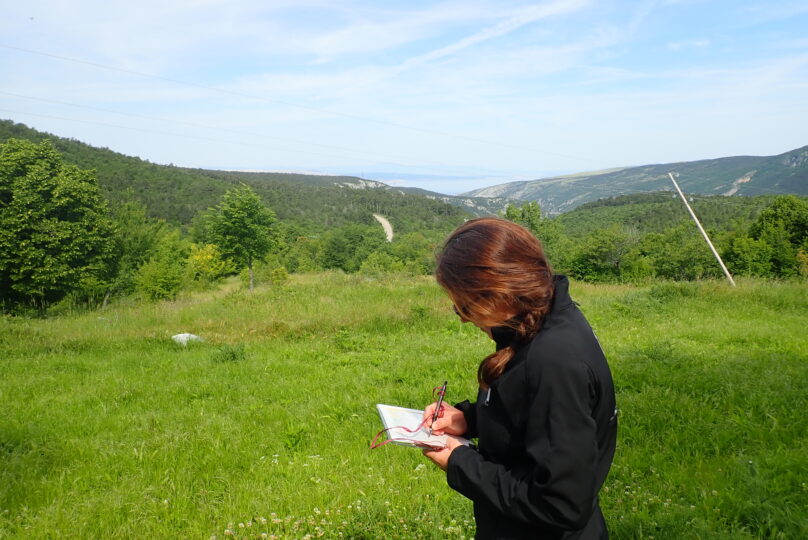
“We have really enjoyed the volunteering experience. Croatia is one of the few places in Europe with such beautiful nature and birdlife. Anything we can do to contribute and help preserve it is always worth it and a rewarding experience. We also learned so much more about this subject and its importance. We are grateful to BIOM for the work they do and for reaching out and sharing knowledge with and involving the public in such issues, which we were honestly quite ignorant of before this. I can encourage others who are passionate about nature to get involved with BIOM or any local environmental organization and get a membership. BIOM in particular stood out as they put a lot of effort into science communication and you are sure to learn a lot to help ensure nature’s balance in beautiful places like Croatia. We hope that our data helps to shed more light on the topic of large bird electrocution in Croatia. Don’t hesitate to learn more about the environment around you,” says this friendly volunteer duo.





